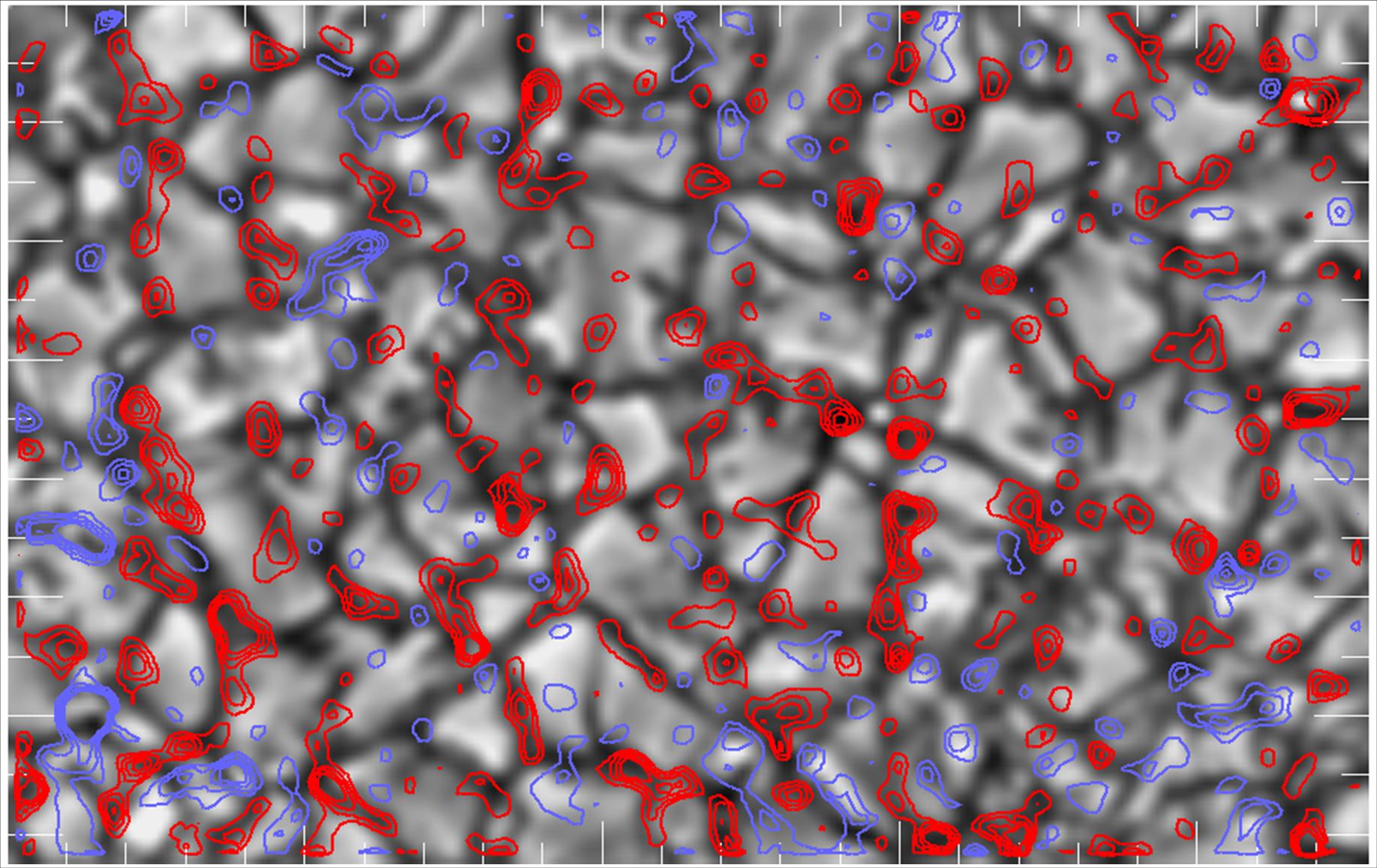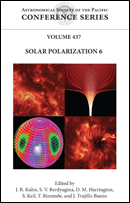For a review on the quiet Sun magnetism (July 2010)
see this paper presented to the SPW6
Magnetic fields everywhere on the quiet Sun

Magnetogram published in 2003 (Dominguez Cerdeña el al 2003a, 2003b) showing magnetic fields everywhere on the solar surface, well before the notion of magnetic fields pervading the full sun was part of the conventional wisdom.
Vortex flows
Solar convection models predic mild upflows of hot plasmas, and concentrated downflows. The cold plasma returns to the solar interior as through a sink, and the conservation of angular momentum forces the cold plasma to swirl. These predicted vortex flows (or whirlpools) had remained elusive so far, but we found them traced by the motions some magnetic bright points (BPs) follow a logarithmic spiral in their way to be engulfed by a downdraft. The observations were made with the SST at La Palma.
The paper is here.
A movie is found in YouTube, and can be downloaded from here.
This is a short interview prepared by Ines Bonet for outreading (in Spanish).
Bright Points in the Intergranular lanes are probably tracing kG magnetic concentration. The image below shows all the BPs existing in a small quiet Sun field-of-view (68 x 68 arcsec2) observed with the SST at the solar disk center. We find 0.97 BPs Mm-2, which is equivalent to 1.2 BPs per solar granule! The counting is decribed in this Letter (SA et al. 2010), where we basically repeat with better images the work where we discovered the presence of BPs in the quiet Sun (SA et al. 2004)

The scale on the lower left corner of the image corresponds to 5000 km on the Sun. The image above corresponds to the April 16, 2010 Astronomy Picture of the Day
It also appeared in FOTCIENCIA8, this compilation of extremely nice scientifically related pictures. The original webpage is in here. .
This other paper Viticchie et al. 2010 has repeated the analysis of quiet Sun asymmetries carried out here but using Hinode/SP data. The results are similar: mixed polarities, large unsigned fluxes, and the presence of kG fields at the bottom of the photosphere. This is one nice Figure of ms.

We apply kmeans to classify all the kinds of Stokes V shapes observed in the quiet Sun disk center with HINODE/SP (Viticchie & SA). We find a clear relationship between shape and position on the surface, i.e., on whether the observation correspond to granules, intergranules, and upflows and downflows.


